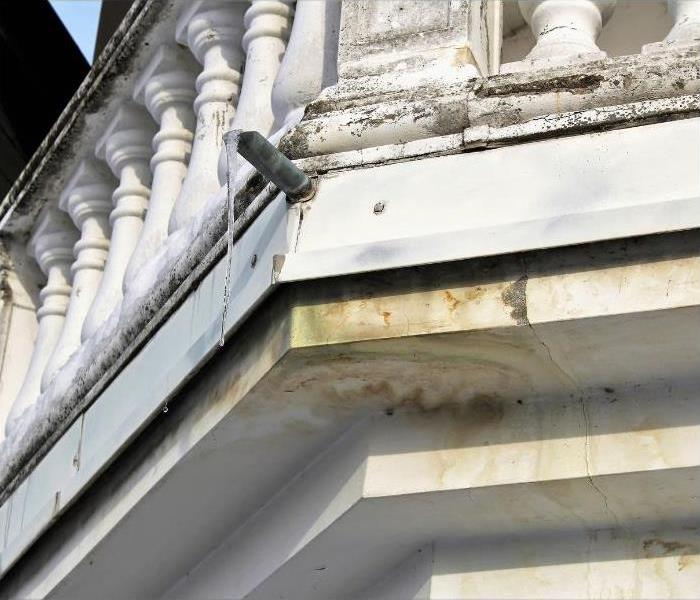What a Flood Leaves Behind: Finding Mold in Unexpected Places
7/28/2023 (Permalink)
What a Flood Leaves Behind: Finding Mold in Unexpected Places
Any homeowner or property owner will tell you about the worry that comes with days of seemingly endless rain. Almost nothing can feel quite as catastrophic as a flood. But the rains eventually have to stop, and the floodwaters must recede. The aftermath, though, is most undoubtedly overwhelming. Now it is time to start cleaning up and rebuilding. But before diving into water damage remediation, it is crucial to check for mold and repair mold damage.
Floodwaters can leave behind moisture that allows mold to grow in hidden, unexpected places. If left unchecked, mold can pose serious health risks and further damage your home or property. Here's what to know about emergency water damage restoration and mold cleanup after a flood.
Where Mold Lurks After Flooding
Mold needs moisture to grow, and floodwaters create the perfect wet environment for mold to flourish unchecked. It is obvious to address water-logged carpets, drywall, and other expansive or visible surfaces for mold. But it is easy to overlook other areas where floodwaters may have seeped in and left lingering moisture. Water damage repair contractors know where to look when examining a property hit by flooding. They are aware of these sneaky spots:
- Behind baseboards and crown molding: Water can seep into cracks and crevices, creating the damp conditions mold loves. Baseboards are especially prone to absorbing moisture like a wick.
- Inside ductwork: If floodwaters reached vents, moisture could have traveled through HVAC systems and condensed inside ducts. This standing water allows mold colonies to thrive out of sight.
- Behind furniture: If furniture had remained in place during flooding, the backsides of cabinets, dressers, and bookshelves pressed against walls can hide moisture and possible mold growth.
- Inside walls: Drywall soaks up floodwater like a sponge. Even if the surface looks dry, moisture trapped within wall cavities provides a breeding ground for unseen mold, not to mention making the drywall unstable.
- Under floors: Flooding can warp floors and open gaps that allow moisture underneath. Subfloors, insulation, and crawl spaces under a home's or building’s structure are at risk for hidden mold issues.
- In attics: Through leaks in the roof or ventilation systems, attics can accumulate moisture that spurs mold growth in insulation, roof decking, and other materials. A musty odor in the attic is a red flag and should be addressed immediately.
Commercial water damage services are essential for finding, repairing, and remediating water damage and mold growth after flooding strikes your property.
Signs of Mold Infestation
Even if you do not see obvious mold growth, there are other warning signs of contamination. A few things to watch for include for:
- A musty, earthy smell, especially when air conditioning or heat kicks on
- Discolored spots or cottony-looking growths on surfaces
- Warping floors or discoloration along baseboards and walls
- Water stains on ceiling tiles or around vents
Hiring professional water damage remediation experts should be your first call if you suspect hidden mold. They have specialized equipment and expertise to detect dampness and take samples for mold testing if needed.
Health Dangers of Mold Exposure
It does not take long for mold to take hold and permeate homes and buildings, thus releasing spores into the air. Inhaling or touching mold spores can trigger allergic reactions, asthma attacks, respiratory infections, and other health issues. Mold releases mycotoxins that can suppress the immune system and even cause neurological problems in some cases. Babies, children, the elderly, and those with compromised immune or respiratory systems are most at risk from mold-related health issues. Small amounts of mold, especially toxic black mold, and repairing mold damage should be addressed promptly.
Professional Water Damage Restoration and Mold Remediation
Extensive mold contamination should be handled by professional water damage specialists trained in mold remediation. Remediators use protective gear and containment techniques to avoid spreading spores throughout the home or building during cleanup. They employ the latest antimicrobial agents, air scrubbers, dehumidifiers, and other methods to thoroughly clean, disinfect, and dry all materials with mold growth. Air ducts may also need cleaning to remove any fungal debris. Professional mold remediation removes the root cause of moisture accumulation and prevents regrowth.
The aftermath of flooding poses many challenges for homeowners and property owners. But addressing moisture damage and hidden mold growth should be a top priority to protect your home, building, and health from lingering issues exacerbated by flooding. Water damage remediation experts at SERVPRO will carefully inspect all areas exposed to floodwaters, watch for signs of contamination, and take prompt action against any mold problems discovered.
Your home can recover fully from a flood by hiring SERVPRO. Our team will respond quickly to any water emergency and tackle any water damage and mold damage repairs so that you can live and work in homes and buildings free from the hazards of mold. Call SERVPRO today!



 24/7 Emergency Service
24/7 Emergency Service
